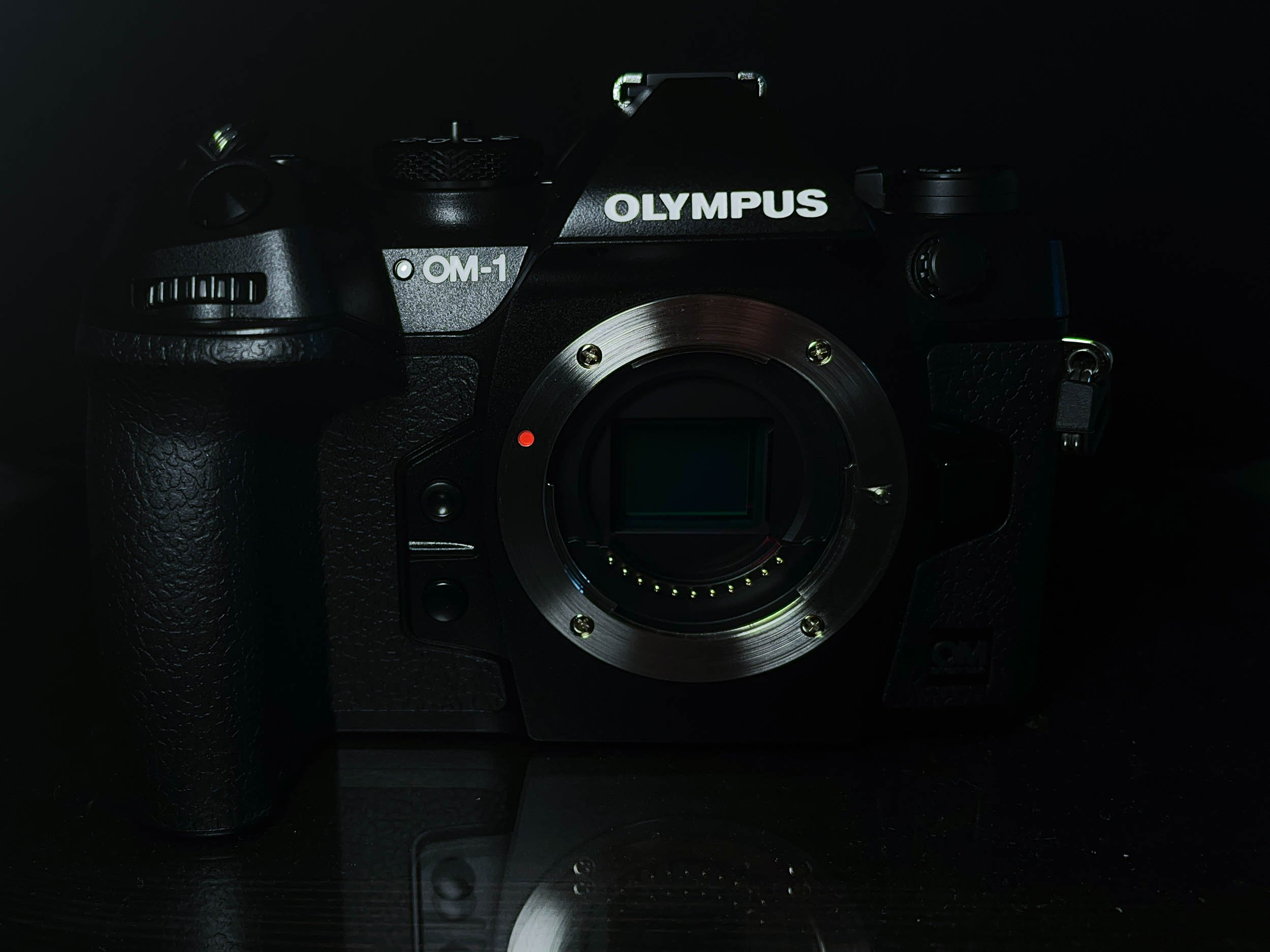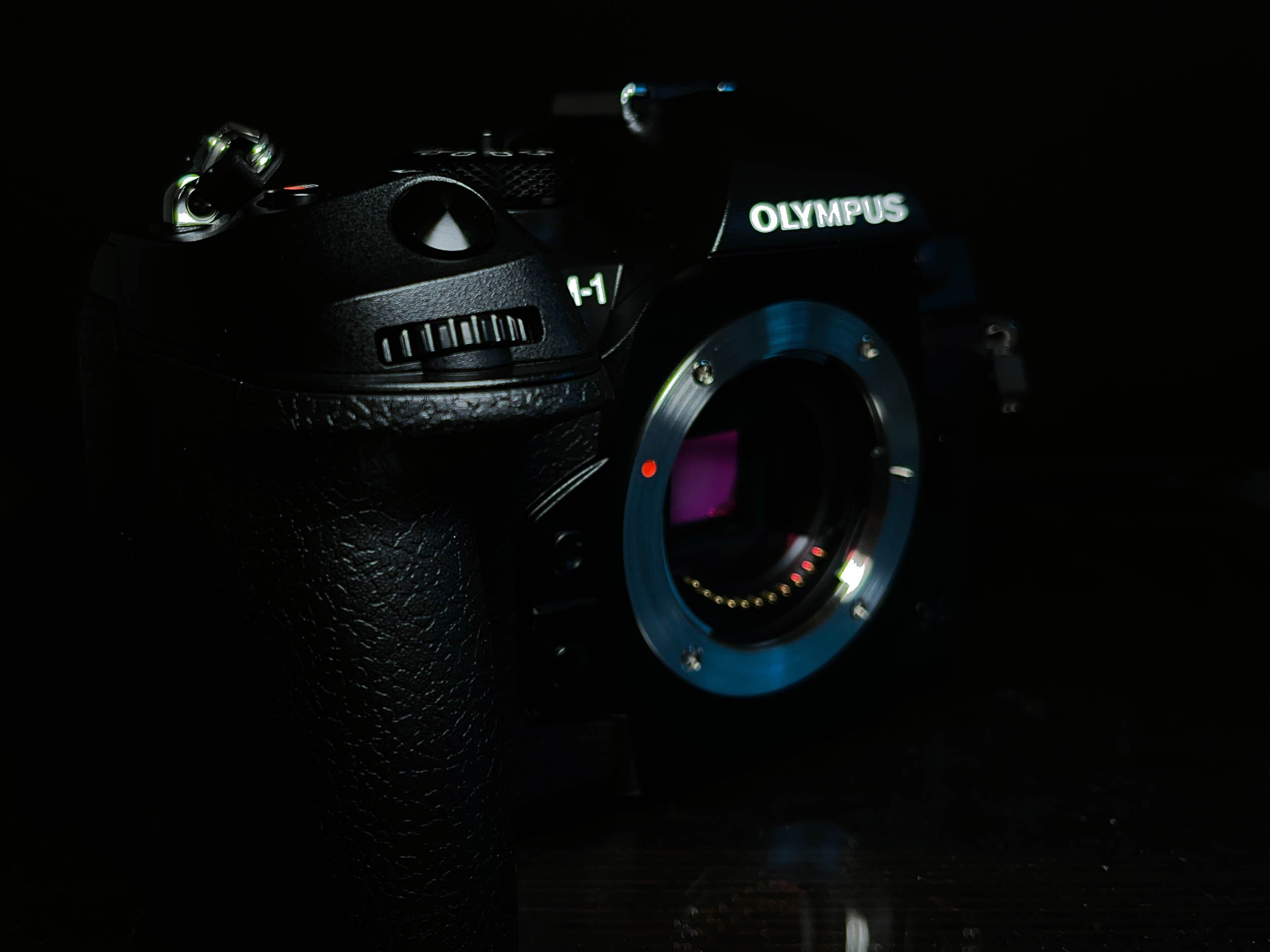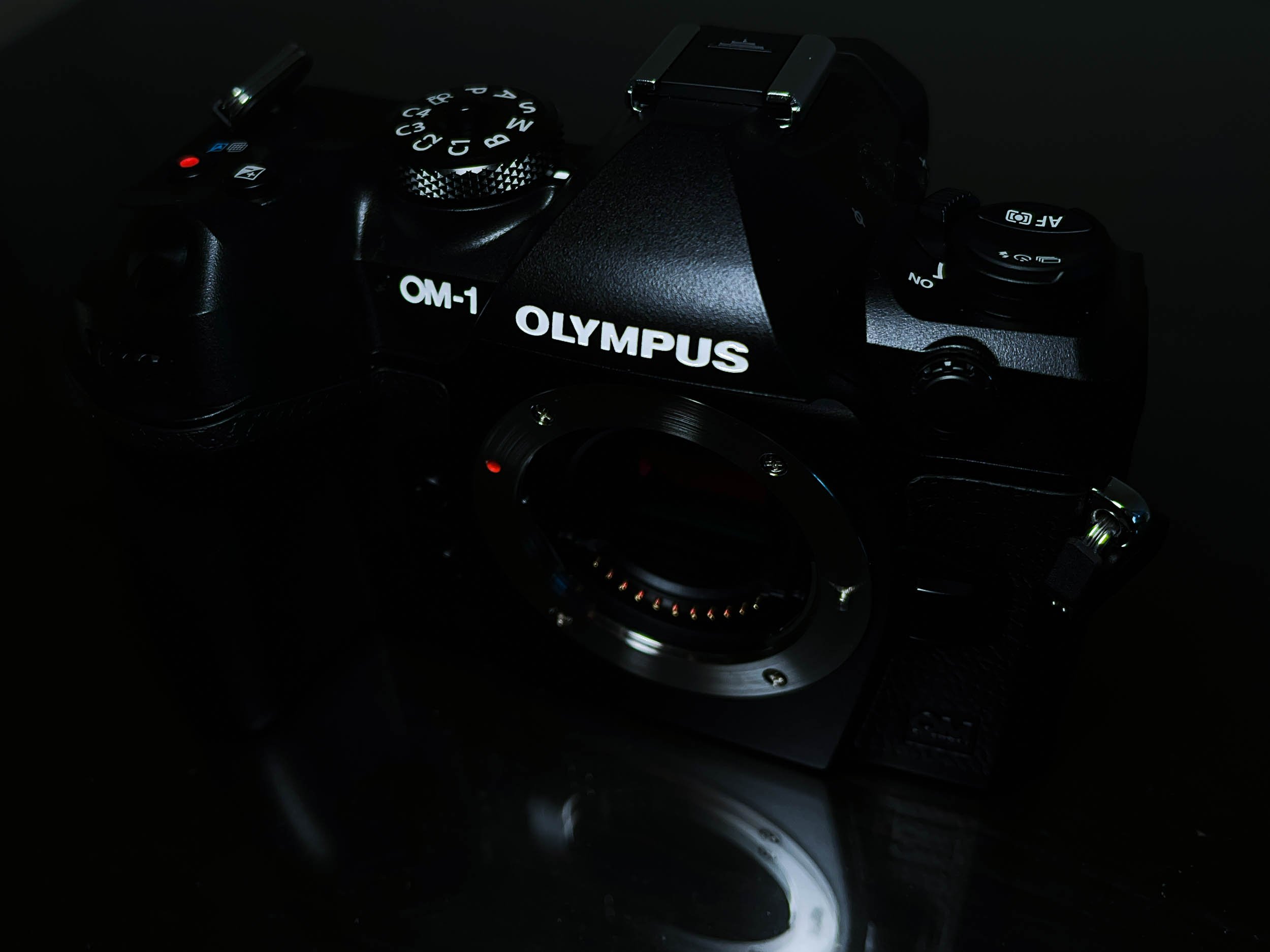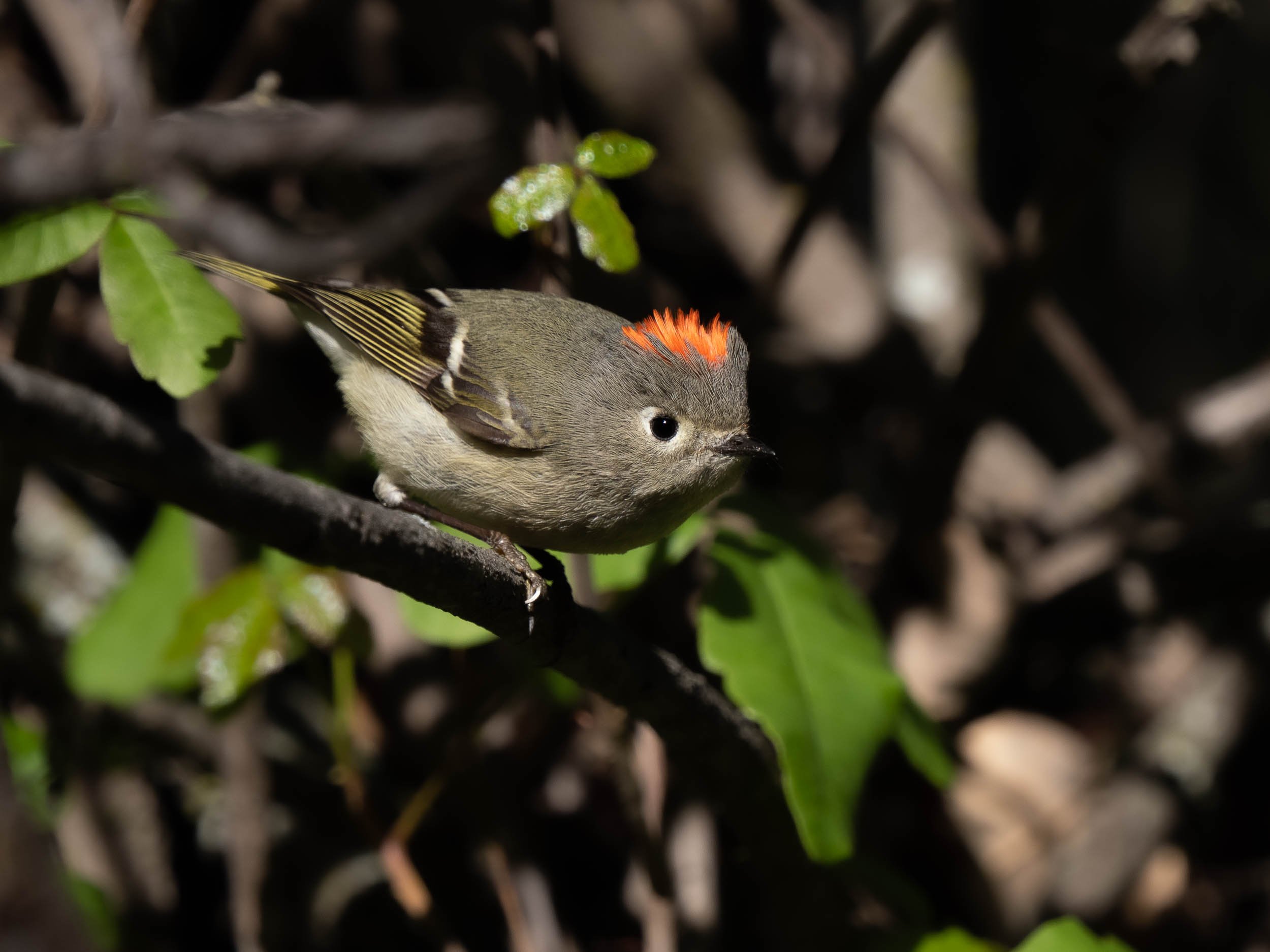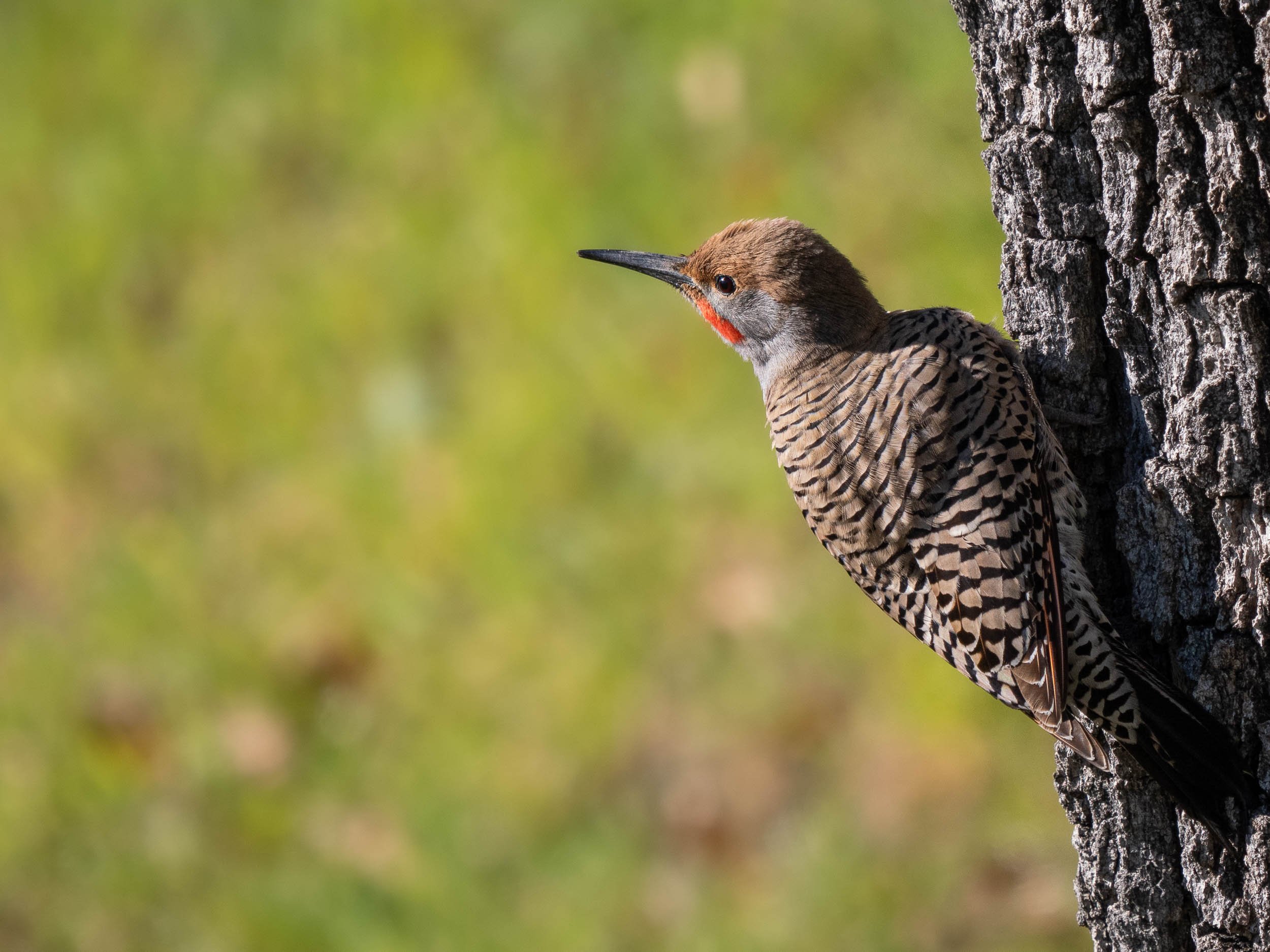OM Systems Olympus OM-1 for Wildlife - First Impressions Review
OM-1, Olympus 150-400 F4.5 Pro Lens
OM-1: Making Photography Fun, AgainTLDR Summary
After three short days of use, it is obvious to me that the OM-1 is a great camera, and easily the most substantial upgrade in OM cameras since the E-M1 II was introduced. The OM-1 takes all of what was great in the prior models and improves upon just about everything else, including a brand new AF engine, stacked sensor, and EVF. In addition to these substantial improvements, there are also a bunch of small but meaningful “easter-egg” improvements over prior Olympus bodies which make for a more enjoyable and intuitive experience. The end result is a refined, versatile, and compact body, without any significant drawbacks. Combine this body with access to the largest and most diverse lens library in the industry, and this becomes a very compelling choice for the wildlife and landscape enthusiast/photographer. Most importantly: it is a lot of fun to use.
Scroll below for my initial impressions after using the OM-1 in the field.
Where we came from, where we are now
When the E-M1 II was released back in 2016, it was a groundbreaking camera that offered impressive speed and performance in a compact body. Most other “serious” cameras at the time were hulking DSLRs. The E-M1 provided features absent from DSLRs and other mirrorless cameras at the time, including class-leading in-body image stabilization. Since then, the popularity of mirrorless cameras has exploded, DSLRs have been mostly back-burnered, and an almost endless number of impressive mirrorless cameras have come from Panasonic, Nikon, Fuji, Canon, and Sony. While the E-M1 III and E-M1X brought innovative software improvements and performance boosts, in many ways, they were more of the same from a hardware perspective.
OM-1, Olympus 150-400 F4.5 Pro Lens
The E-M1 III and E-M1X were evolutionary steps that built upon the basic underpinnings of the E-M1 II. All three of the cameras shared the following:
20.4 MP sensor
2.36M dot EVF
121-pt Hybrid AF engine
60fps burst with AF Locked or 18fps in AF-C with electronic shutter
Tripod high-res shot mode
Same menu and interface
The most significant advances with the E-M1X and E-M1 III included speed improvements and implementation of machine-learning AF-modes (e.g. improved face and eye detection with the E-M1III and bird AI/and other subject detection algorithms with the E-M1X). The cameras also added unique software features like Live ND and Handheld High-Resolution shooting mode, as well as improved OIS, and better focusing in low light conditions. Ergonomic enhancements included a dedicated AF joystick and a beefier grip - in the case of the E-M1X.
OM-1, Olympus 150-400 F4.5 Pro Lens
Having experience with OM-D cameras as part of my personal kit over the years, I generally feel right at home with the cameras, and know how far I can push them until I start to see some weakness. While I generally regard them as reliable, enjoyable-to-use photographic tools, there were two areas where I always had some issues:
EVF. The EVF panel on the EM1X was reasonably fast and decent quality - by 2014 standards. By today’s standards, let’s face it - not good. Any time I used an Olympus camera, I found it difficult to judge critical focus and the colors are always washed out and not very representative of the final output. All of the other camera manufacturers except for Olympus have since upgraded their EVF panels.
AF Performance. Focus accuracy/drift has always been a nag I faced with the earlier Olympus bodies. My experience is that when shooting a static subject in burst, even in good light conditions, the captured frames will oscillate from acceptably sharp to tack sharp. I don’t know if it was due to the size of the focusing squares, or some inherent characteristic of the AF system, but I found this always happened when shooting wide aperture lenses or telephoto lenses with very narrow depth of field. As someone who agonizes over tack sharpness and image quality, having a more accurate and reliable autofocusing system on micro four-thirds has always been a dream.
While there’s always room to nitpick any camera, my list of qualms with the Olympus cameras going back to the E-M1 II was pretty small, but these two were the salient ones. The idea that OM could finally address these shortcomings with their new flagship body was a pretty exciting prospect.
Enter the OM-1. While some of the original luster of those older OM-bodies had started to wear off in the face of stiff competition, the brand new OM-1 has shown me that OM Systems is still very much in the game. To me, this camera is a testament that Micro Four-Thirds remains a relevant and compelling format. While the new camera doesn’t introduce much in the way of new “showstopper” software features (in the same way that Live ND and handheld high-resolution were at first introduction), it is obvious that a lot of time was spent refining what was already there - which I definitely think was the right move.
OM-1, Olympus 150-400 F4.5 Pro Lens
Build Quality
Starting with the OM-1’s build quality, there haven’t been any monumental changes from the general formula Olympus has implemented over the years, and in my view, this is a good thing. The OM-1 is a mix of E-M1X and E-M1 III with some added tweaks—it’s similar in shape and layout but slightly larger than the E-M1 III, but shares the similar shutter and aperture dials, AF-ON button, and contoured shutter button of the E-M1X. We finally get a proper matching battery grip with an AF joystick (something that was omitted during the E-M1 III release).
The OM-1 does not afford quite the same solid brick feel of the E-M1X, but it certainly feels robust enough to survive outdoor use without being babied. Similarly, it lacks the E-M1X’s refined rubber coated dials and the plastic lacks the same powder coated finish. Instead of the E-M1X’s metal dials, it’s mostly plastic. This is not to say it feels cheap, but it feels less rugged and some of the buttons have less satisfying “give” compared to the E-M1X. This is to be expected with the lower introductory price point. Compared to the E-M1X, the OM-1 grip is also not as deep and my pointer finger doesn’t fall in exactly the right place as it did before on the E-M1X. This is a compromise for a more compact body that feels significantly lighter in hand. The grip still feels very comfortable.
While I’m generally pleased with the build and ergos of the OM-1, one thing I’d like to see on future OM bodies is a top LCD panel. I don’t need a big top screen, just a small one to show basic settings like ISO, aperture, shutter speed, and to check battery life at a glance without having to look at the rear LCD or EVF. I’d also like to be able to check battery life when the camera is off. There seems to be space for one there, but sadly it’s omitted.
OM-1, Olympus 150-400 F4.5 Pro Lens
EVF
As for the new EVF - I’m in love. After looking through the EVF on the OM-1, it’s hard to imagine ever going back to the washed-out 2.3 MP panel on the E-M1 X or III. The previous EVF was not horrible by 2014 standards, but having seen multiple generations of flagship camera, it was clearly time for an upgrade. I can’t overemphasize how drastic an improvement it is being able to accurately judge focus, exposure, and to review photographs with the new screen. To me, this was one of the biggest reasons to upgrade. OM needed to ace the EVF with their new camera - and they did. Finally, an Olympus camera with a great EVF. That’s enough WOW for me! Review over! Just kidding…
Burst modes
A big marketing point with the new model was the introduction of a stacked 20 MP sensor, offering faster burst modes. While I’m pleased to report that there are some definite improvements in burst shooting, it’s a bit of a mixed bag.
The most flashy figure is the SH1/120FPS mode. While I was initially super excited by the prospect of shooting 120FPS RAWs, I was disappointed to find out you cannot even shoot a full second at 120 FPS - and after that, it takes 10 seconds to clear the buffer. While I’m sure I will eventually think of something to take advantage of this (maybe hummingbirds in flight visiting a flower?), this mode is seemingly useful only for action one can time down to the fractions of a second, with the luxury of waiting afterwards for the buffer to clear.
For me, the more modest modes, like SH2 (at 50 or 25 FPS), and Sequential Silent Shooting at 20 FPS in particular are much more useful. SH2 retains full AF/AE at an impressive 50FPS, but the buffer does fill quickly (in 2-ish seconds), and another major drawback in this mode is inability to shoot at shutter speeds slower than 1/320th of a second. Since I am very often shooting perched birds anywhere from 1/30th to 1/320th, this automatically means that this mode won’t be used nearly as often as the 20FPS sequential with blackout. Darn.
OM-1, Olympus 150-400 F4.5 Pro Lens - 10 photo handheld focus stack
I’m not sure why the camera is limited in this way, but I’m guessing it’s due to the refresh rate the camera sensor needs for operation during these modes. As it stands, if you want to use the “no-blackout” settings on this camera, you are stuck shooting at 1/320th or faster. For me, this means I’m going to be using blackout-sequential 99% of the time, as I often shoot in low-light scenarios and want to reap the most out of OM’s great OIS. Although I’m quite used to shooting with blackout and don’t find it offensive, I can’t help but think it sort of defeats one of the key purposes of a stacked sensor camera. I also dislike that, while shooting in SH modes, there are no frame indicators or audible cues to know when the shots are being taken. The R3/Z9/A9 offer this, so…future firmware update maybe?
While there is no question that this camera was built for speed, I suspect that if OM Systems had used the faster CF Express Type A or B cards in this body, it would have drastically improved pro-capture and high FPS shooting modes that are otherwise limited by buffer size and read speeds. I believe the UHS-II may be the bottleneck.
Now that I’ve finished harping on some of the negatives, some great news is that Pro-Capture has gotten quite an upgrade with being able to shoot at 50 FPS with AF-C. Pro capture has been a wonderful tool to capture moments that can be anticipated, like a bird taking off. With prior models, which were limited to AF-S in the faster modes, the bird would often be out of focus because it would fly away or towards you during the sequence. With AF-C, assuming the camera can keep up with the subject movements, this issue should be negated. I can’t wait to put this improved mode to better use when the situation presents itself.
OM-1, Olympus 150-400 F4.5 Pro Lens
Image Quality
I’d like to start by getting the issue of megapixel count out of the way. Would I have appreciated a 25 (or greater) megapixel sensor on the OM-1? Yes. Does the desire for more megapixels seem to outweigh the performance gains of a stacked BSI sensor? No.
What I can say thus far is those 20.4 megapixels in this new sensor are great. I have only anecdotal evidence to provide, but both my partner and I agree: whether it’s the new sensor or OM systems put some magic sauce into their new image processing algorithm, the photos appear better quality. Images have more pleasing tones, more natural looking shadows and highlights. I never had any major complaints about the prior models’ picture quality, but there is no doubt to me that this new chip offers improved image quality.
OM-1, Olympus 150-400 F4.5 Pro Lens
Autofocus Performance
I can only talk about the AF based on limited experience, since I’ve only had this camera for a few days, but it seems obvious to me that autofocus performance has been improved substantially. I’m not seeing the same shot-to-shot inconsistency that I did with the prior models, which is a massive improvement.
The new AF selector squares are intelligent and easy to toggle, and the revamped AI-autofocus seems substantially improved (for birds at least, which is all I have tested it on so far). The camera picks up on bird subjects exceptionally well, even if they are small in the frame or obscured. Like the E-M1X, it does still struggle at times with some false positives, confusing some objects for animals. For this reason, it is best to limit the area within which the camera is allowed to search for a subject. Where bird AI really shines is when capturing birds-in-flight against busy backgrounds. This vulture sequence below was a wow moment for me. The camera nailed every shot despite tons of contrast in the background. My experience with the E-M1X and Bird AI was good, but not as good as this. Much more testing is needed with AF, but i’m impressed so far.
OM-1, Olympus 150-400 F4.5 Pro Lens
OIS
There is not much new to report here, other than the fact that the camera retains the same class-leading OIS performance that opens up new creative possibilities like Live ND, HHHRS, smooth video, etc. So far, I haven’t noticed much difference with OIS performance, but this remains to be tested.
Interface and Usability
The menus are completely revamped on the OM-1. They are more intuitive than before, and very Canon-esque. My only complaint with the menus is: they still haven’t made them touch enabled. Having used multiple other cameras with touch-enabled menus, I keep trying to touch the OM-1’s menus! Of course, when I do so, nothing happens. The same goes for the lack of pinch-to-zoom during image review. Why is this not an option? Only the “OK” menu remains touch sensitive. It seems like in this age of smartphones and tablets, these features need to be prioritized…firmware update?
OM-1, Olympus 150-400 F4.5 Pro Lens
On the plus side, a huge improvement in ease of use has been the added ability to toggle functions like Focus Stacking, Live ND, High-res Shot, and Subject detection ON/OFF by simply pressing a customized function button. It can’t be overstated how useful it is to be able to initiate or override these settings at the touch of a function button. In single point but want to turn on subject tracking? Hit an FN button. Out taking general photos and want to switch to a high-res landscape photo? Hit another FN button. Amazing!
Another couple of easter eggs:
1) When you have the minimalist info settings visible during live view, if you adjust a single setting like ISO, Shutter, or Aperture, it only shows that specific setting being changed instead of cluttering the entire view with settings you are not changing. I like this implementation.
2) When you are chimping using the rear LCD and you bring the EVF to your eye, you no longer have to push the playback button a second time to keep image review active in the EVF.
OM-1, Olympus 150-400 F4.5 Pro Lens
Conclusions
I hope you found my first impressions review of the camera helpful.
If you are wondering whether I think it is beneficial to upgrade from the E-M1 II, III, or X at this stage, I have personally found the upgrade to be worthwhile. While a new camera won’t immediately make you a better photographer, it can be helpful to have improved tools of the trade that don’t hold you down. I found that my shots were being limited in some areas (i.e., inconsistent autofocus, inability to gauge focus with EVF), and I immediately noticed improvements with this new body.
The OM-1 offers excellent functionality and performance packed into a compact body, and unlocks a huge array of lightweight and unique lenses to pair with it. Over the years, I have used and enjoyed the E-M5, E-M1 MK. II, MK. III, and X, and appreciated everything they offered me as a wildlife enthusiast, but the OM-1 improves upon just about everything over those in a major way - including the three “biggies”: 1. EVF, 2. sensor, and 3. autofocus. For that, all I can do is thank OM Systems for listening to its customers and bringing this camera to market.
I look forward to putting the camera through its paces in the coming months. More field reports to come!
My Settings for Wildlife
Below I’ve shared some settings that I’ve changed from the defaults based on my own preferences (Updated 3/19/22):
Image Quality: RAW
Picture Mode: Vivid
ISO-A Upper/Default: 6400/200
Sequential Shooting Settings: SH1: 60 FPS, SH2: 25 FPS
AF+MF: On
Subject Detection: Birds or Cats/Dogs
AF Target Settings & Operations, “Set Home”: AF Target Mode OFF, AF Target Point CENTER
AF Assist: AF Peaking and Focus Indicator: ON
Button Function Mapping:
AF-ON: Subject Tracking ON;
AEL: High-Res Shot ON;
Front FN button 1: DOF Preview;
Front FN Button 2: Digital Teleconverter;
Record Button: Record
Direct Function (DPAD): “Each arrow pad can be assigned…”
Right arrow: Drive mode This is useful for me to quickly change between SH2 and Silent Sequential, since SH2 only shoots at 1/320th
Down arrow: MF
Left arrow defaults to focus point size (useful for BIFs)
Up arrow toggles shutter speed/aperture settings (using DPad instead of dials. Kind of nice if you are working from a tripod and want to set the settings from the back.)
Multi Selector Settings: Center Button: HP
FN Lever Settings: Fn2 (toggle between focus square shape)
Live View Frame Rate: High
Beep Off
Custom modes:
C1: 1/1600th, Wide open aperture, Large tracking square, C-AF, Bird tracking ON, SH2/25FPS
“BIFs mode”
C2: 1/250th, Wide open aperture, Small tracking square, C-AF, Bird tracking ON, Silent Sequential 20 FPS “Birds on Sticks mode”
C3: 1/2500th, Wide open aperture, Small tracking square, C-AF, Bird tracking ON, Pro Cap SH2, 25FPS, Pre-Shutter Frames 20
“Bird’s Gonna Fly Mode”
C4: 1/500th, Wide open aperture, Small tracking square, C-AF, Cat/Dog tracking ON, Silent Sequential, 20FPS
“Slow-ish Mammal Mode”
OM-1, Olympus 150-400 F4.5 Pro Lens
1:1 of image above


